By William H. Langenberg
The first few years after World War II were challenging ones for the U.S. Navy. Massive demobilization of personnel and rapid scrapping or retirement of ships created internal disruptions. Formation of a new Defense Department, combined with sharp reductions in defense spending, led to bitter rivalries among the American military services, each seeking its proper share of increasingly limited resources. Birth of an independent Air Force eager to gain control over all airpower accelerated an internecine struggle with the Navy, leading to the sudden 1949 cancellation of a proposed new aircraft carrier, USS United States.
In this milieu, the Navy faced a concurrent operational challenge: the adaptation of larger, heavier, and faster jet-powered aircraft to existing carriers that had supplanted battleships as primary projectors of naval power during the war. Senior naval aviators were concerned that the new supersonic jet aircraft, with their greater weight and higher takeoff and landing speeds, might not be able to operate safely from available carriers—or even new ones of any reasonable size. One theoretical solution was the Seaplane Striking Force (SSF), in which newly developed seaplanes and vertically launched and recovered aircraft would be unshackled from the need for land-based runways or large aircraft carriers.
As envisioned by Navy planners circa 1950, the SSF included as its primary strike weapons high-performance, four-engine, jet-powered seaplanes. These would be supported by a system of technologically advanced, water-based, or short takeoff and landing aircraft in defensive roles, large long-range flying boats for resupply, and relatively inexpensive surface ships and diesel-powered submarines as supporting tenders and refueling and maintenance stations. The centerpiece of the 1950s concept was the P6M SeaMaster flying boat, designed by the Glenn L. Martin Company of Baltimore. In support of the SeaMasters’ conventional or nuclear long-range attack mission were three aircraft proposed by Consolidated Vultee Aircraft Corporation of San Diego (Convair). These included the vertical takeoff and landing XFY-1 Pogo tail-sitter defensive fighter aircraft; the F2Y-1 Sea Dart, an innovative delta-winged jet fighter that could take off and land from water; and the R3Y Tradewind, a sleek, large, four-engine turboprop flying boat.
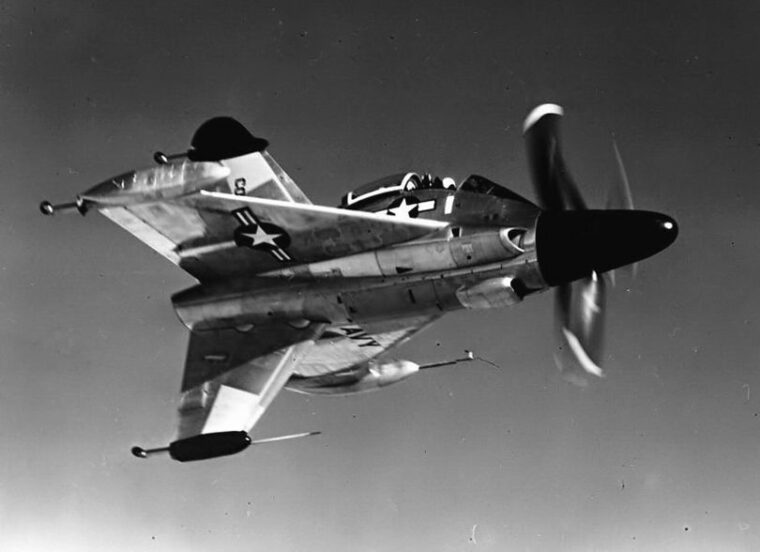
The Convair XFY-1 Pogo
The Convair XFY-1 Pogo was perhaps the least significant among the aircraft elements of the proposed SSF. Designed as a vertical takeoff and landing fighter that could operate from a relatively small platform ashore or on a ship, the Pogo would be a fighter liberated from the need for a land runway or aircraft carrier flight decks. It would ostensibly be used to flight decks. It would ostensibly be used to defend SSF forward operating bases and strike aircraft or convoys at sea. As originally designed by Convair, Pogo was an innovative tail-sitter with stubby delta wings and fins above and below the fuselage. Four small landing wheels were affixed to hydraulic pegs at the ends of the wing and vertical stabilizers.
The Pogo had three major flaws. First, the XFY-1 was powered by a huge turboprop engine in an era when American manufacturers were experiencing seemingly insoluble problems developing such engines with satisfactory power and reliability. The Pogo mounted the Allison YT40-A-16, which consisted of two coupled Allison T38 engines producing 5,500 estimated shaft horsepower driving two three-bladed, contra-rotating propellers. The propellers were intended to operate as helicopter rotors while the aircraft was in or near vertical mode during landings and takeoffs. Second, the vertical takeoffs and landings were foreign to pilots who were used to landing on runways or ships while flying forward with full view of the landing area and its periphery. Landings in particular were challenging and hazardous for fledgling pilots because a Pogo aviator had to land by looking over his shoulder or into rearview mirrors while descending to the pad. Third, even if the engine problems were resolved, maximum flight speeds for Pogo would barely exceed 550 miles per hour, far less than the speed of the new jet fighters deployed by the most probable enemy, Soviet MiGs. In addition, the relatively slow but lightweight Pogo lacked spoilers and air brakes and could not slow down efficiently after flying at high speeds.
Initial flight tests for the radical Pogo, perhaps unsurprisingly, were conducted indoors and tethered at Naval Air Station Moffett Field, California, in early 1954. Convair engineering test pilot and Marine reserve Lt. Col. James F. “Skeets” Coleman made the first untethered test flight at Lindbergh Field, San Diego, in August, reaching an altitude of 40 feet. Coleman continued takeoff and landing practice at Naval Auxiliary Air Station Brown Field, California, logging nearly 60 flight hours in 70 such drills, one of which attained an altitude of about 150 feet. In November, he became the first American pilot to finish a complete flight in the aircraft. He executed a vertical takeoff in Pogo, transitioned to horizontal flight over San Diego for about 20 minutes, then landed vertically within a square measuring 50 feet on each side. Attesting to the difficulty of flying the aircraft, Coleman was awarded the 1954 Harmon trophy, given annually to the world’s outstanding aviator.
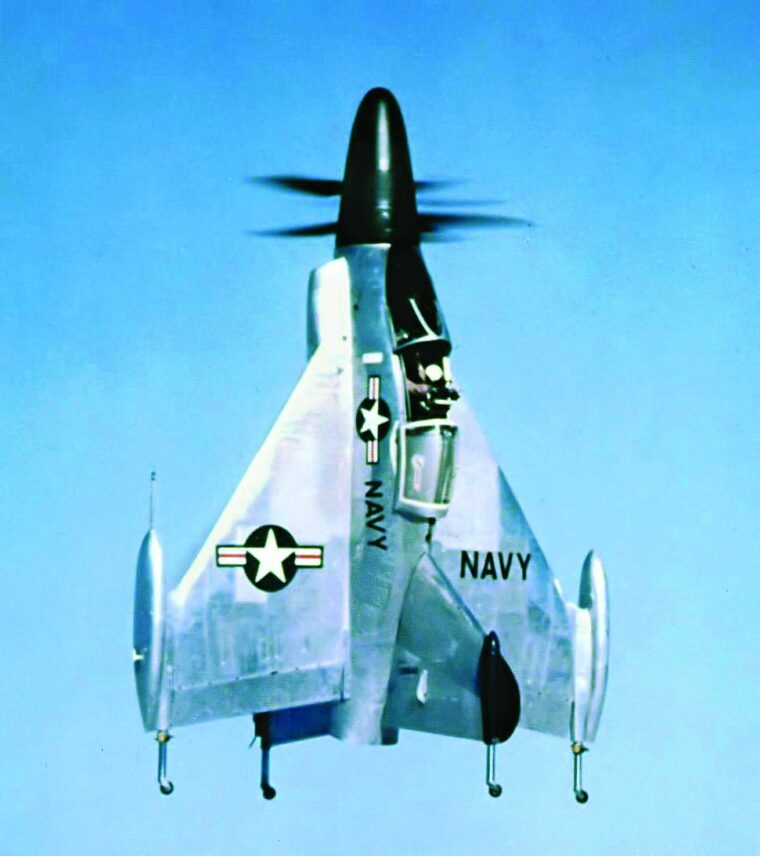
During its brief career, the sole experimental Pogo logged only about 80 flights. By late 1954, it had become obvious that the aircraft would never overcome its three major problems. The XFY-1 program was terminated by the Navy in August 1955. Convair continued briefly with limited testing of the aircraft, which was grounded for good in November 1956. The single prototype of the unsuccessful Pogo was later transferred to the National Air and Space Museum at Suitland, Maryland, where it currently remains.
The XF2Y-1 Sea Dart
In early 1948, the Navy initiated a design contest for a high-performance, supersonic seaplane fighter that could operate from forward areas without the need of either carriers or land air bases. Convair entered the contest in October 1948 via its proposal for a delta-winged design with streamlined hull that rested on the water and rose up on a pair of retractable hydro-skis for takeoffs and landings. After two years of extensive testing and empirical revisions of seaplane designs, Convair was awarded a contract in January 1951 for two prototypes, which were assigned the designation XF2Y-1, Sea Dart, and became an essential element of the SSF concept. The Sea Dart was to be powered by two afterburning Westinghouse J46 jet engines, providing 6,000 pounds of thrust each, fed by a pair of air intakes mounted high on the sides of the fuselage above the wing and behind the cockpit. This configuration was chosen to prevent water spray from entering the intakes during takeoffs and landings. The plane was fitted with a set of dive brakes on the lower rear fuselage, which also doubled as water brakes and rudder while taxiing on the surface.
Sea Darts took off and landed on a pair of retractable hydro-skis that extended outward on hydraulic legs from recesses cut into the lower hull, one ski on each side of the hull. The Navy had such confidence in the design that it ordered 12 production F2Y-1 aircraft in August 1952. Pending the availability of the J46 jets, the first prototype XF2Y-1 was fitted with two non-afterburning Westinghouse J34 engines providing only 3,400 pounds of thrust each. Initial flight tests in April 1953 revealed that the aircraft was severely underpowered for its weight. In addition, the hydro-skis vibrated so much during takeoffs and landings that the aircraft was extremely difficult to control. To cure the vibration problem, the skis were redesigned and their hydraulic legs improved. But inadequate thrust and seemingly insoluble vibration problems with the hydro-skis continued to plague the Sea Dart. In October 1953, the Navy canceled the remaining XF2Y-ls.
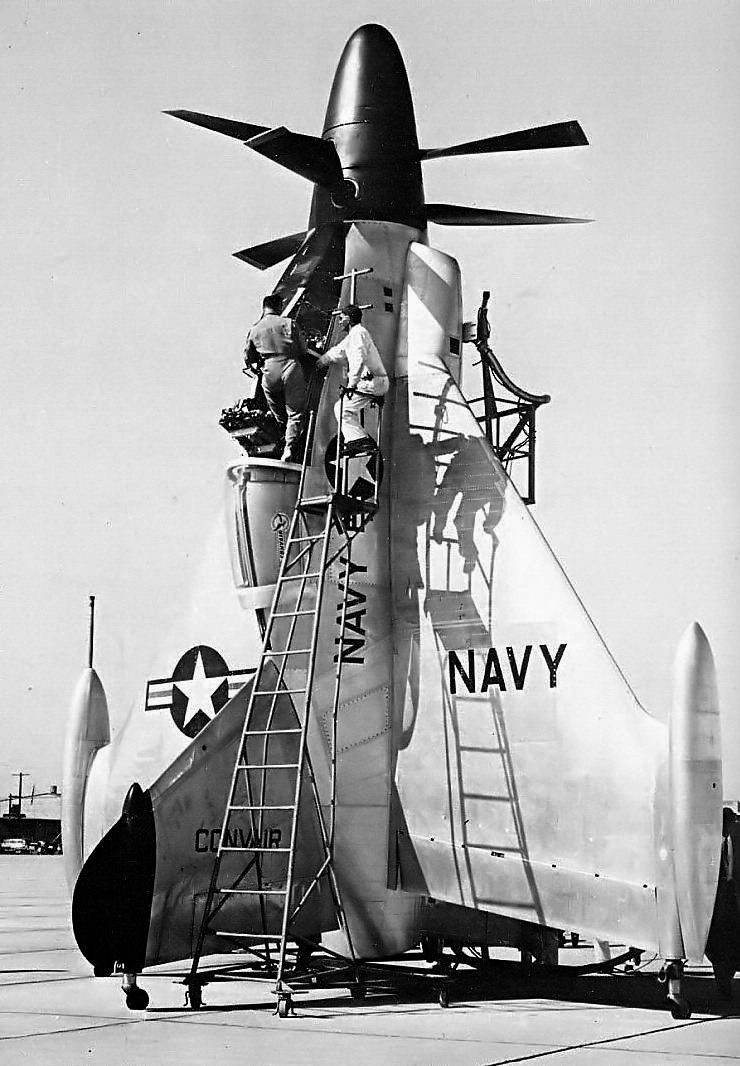
The first of four contracted YF2Y-1 service test aircraft joined the program in early 1954. It was powered by a pair of afterburning Westinghouse J46 turbojets. In overall appearance, the YF2Y-1 was similar to the XF2Y-1 except for the revised nacelles housing more powerful J46 engines. Convair test pilot Charles E. Richbourg made the initial flight tests of this Sea Dart. In August 1954, at an altitude of 34,000 feet, he took the first YF2Y-1 through the sound barrier while in a shallow dive, making the Sea Dart the first and to date the only seaplane to go supersonic. Since the Sea Dart had been designed before the application of the fuselage area rule, the aircraft experienced high transonic drag and remained unable to exceed the speed of sound in level flight.
The Fatal End of the Sea Dart Program
By the fall of 1954, both the Navy and the manufacturer were confident that all three aircraft being developed by Convair were ready for a public demonstration of their capabilities. In November 1954 the Navy scheduled a daring but, in retrospect, premature flight demonstration in San Diego for all three aircraft. Invited for the performance were high-ranking Navy officers and Defense Department officials, Convair management and engineering personnel, and a large press contingent. The first act was performed by the XFY-1 at Naval Auxiliary Air Station Brown Field, where the experimental Pogo made a successful vertical takeoff, conversion to level flight, and safe vertical descent on its quadruple landing wheels. Following this performance, guests were transported to Convair’s seaplane ramp on San Diego Bay, where they were treated to an impressive flyby from the R3Y Tradewind.
The last scheduled activity on the public demonstration was a takeoff, flyby, and landing by the Convair YF2Y-l Sea Dart by veteran test pilot Richbourg. The Sea Dart made a spectacular takeoff run from the bay, and Richbourg retracted its skis immediately after liftoff. He then flew east of San Diego and turned back to perform a westerly flyby over the bay. The Sea Dart had reached about 500 knots over San Diego city hall when Richbourg fired the after- burners. The aircraft suddenly disintegrated, enveloped by a huge fireball, and plunged inverted into the bay near Convair rescue boats. Richbourg was killed by the impact and his body immediately recovered by frogmen. As a result of the disaster, all Sea Dart operations were temporarily suspended until a Navy accident board completed its investigation. In December 1954, the board concluded that the accident had been caused by pilot-induced longitudinal pitch oscillations and not any unique design deficiencies in the Sea Dart itself.
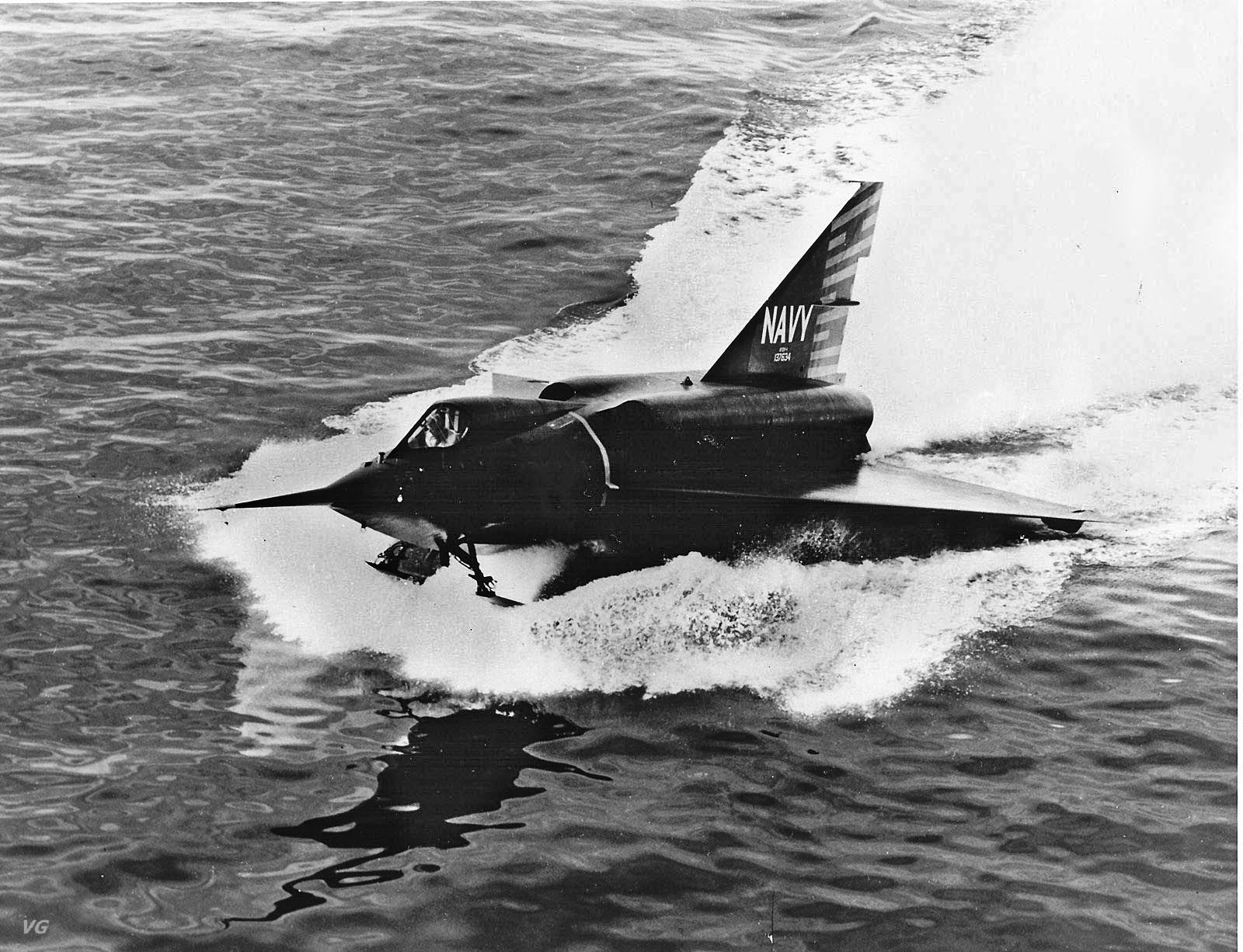
Even before the public fiasco at the YF2Y-1 flight demonstration, the Navy had been gradually losing interest in the Sea Dart project. Even with more powerful engines, the aircraft could not achieve supersonic speeds. Continuing problems with saltwater intrusion plagued the jet engines, and excessively vibrating water skis could not be corrected. As a consequence, the Navy canceled 10 of the 16 production aircraft in December 1953. All remaining six production F2Y-1s were canceled in March 1954. The fatal crash by Richbourg later that year, with the attendant bad publicity, put the quietus on further development, and the Sea Dart program was relegated to test status only. Operational testing of all Sea Darts ended in 1957.
Flying Boats: The Tradewinds and the SeaMaster
The SSF featured the innovative Martin P6M SeaMaster flying boat as its principal strike weapon, one designed to operate from forward, mobile bases at sea, free of costly airfields or aircraft carriers. Two additional aircraft types were required to support the SeaMaster in the new weapons system. They included protective defensive fighters, as epitomized by the Convair XFY-1 Pogo and F2Y-1 Sea Dart. In addition, large, fast seaplanes acting as transport, supply, and refueling aircraft would be vital to support the SeaMaster strike element and mobile base components. The Convair R3Y Tradewind was developed to meet this demanding requirement.
R3Y Tradewinds were a derivative of the postwar XP5Y patrol flying boat, two of which were built by Convair in San Diego for the Navy. The XP5Ys featured a high-aspect-ratio wing and four complex turboprop engines driving six-bladed contra-rotating propellers. Delivered in 1950, these predecessor aircraft included a laminar flow wing mounted high on a sleek fuselage with a single-step hull. One of the two experimental test models crashed at sea in July 1953 from presumed engine failure. Shortly after this incident, the Navy terminated XP5Y tasking for maritime patrol and switched its mission to cargo and troop transport for the SSF.
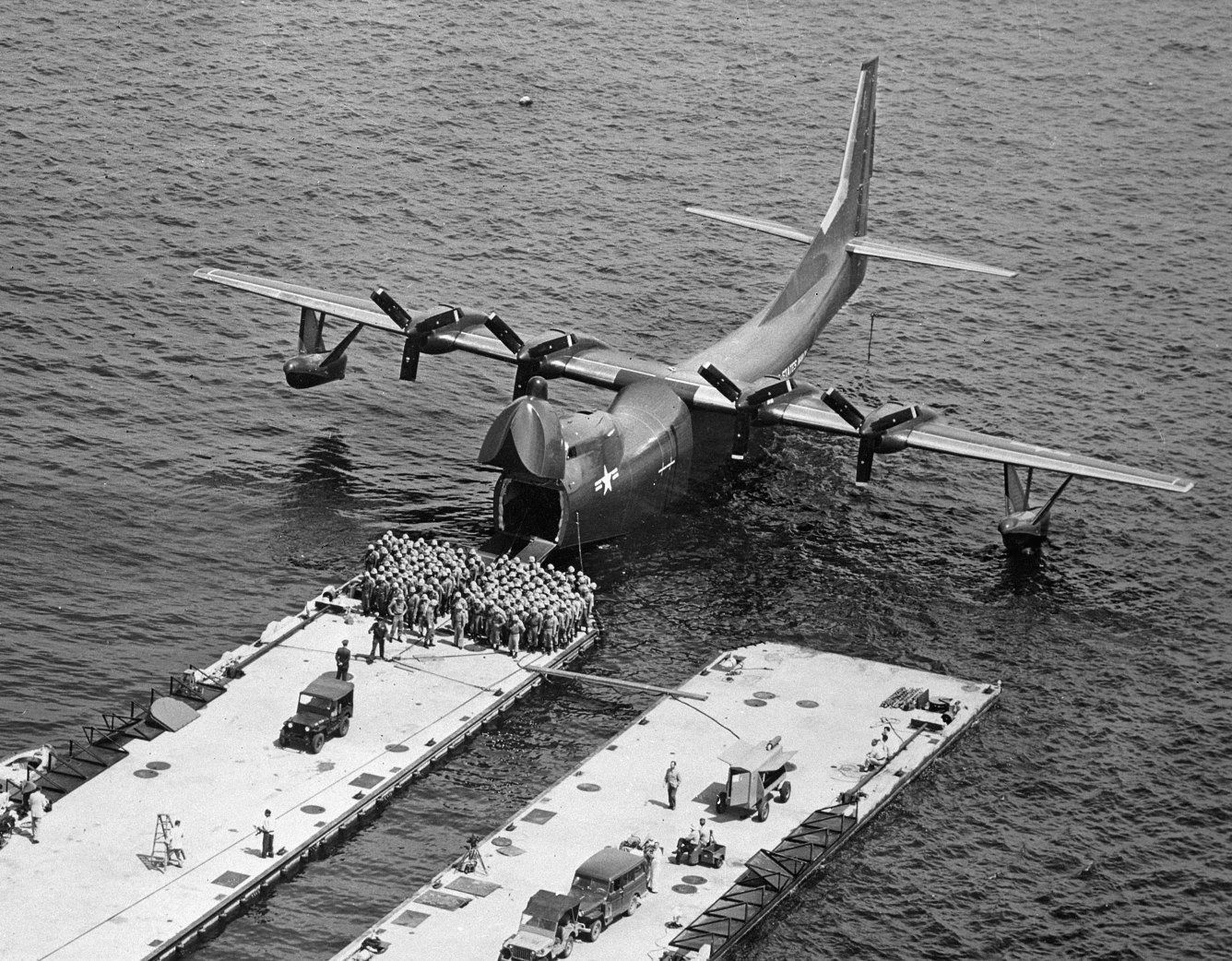
The first of five sleek R3Y-1 Tradewinds, successors to the XP5Y flying boat, made its initial flight in February 1954. All armament and tail-plane dihedrals were deleted from the predecessor design. The new cargo and transport version had a cargo hatch 10 feet wide on the port side of the hull aft of the wing, and its engine nacelles were reconfigured for new Allison T-40-A-10 turboprop motors. These complex engines, driving two contra-rotating propellers through a gearbox, proved to be an Achilles heel for the R3Ys. The Tradewinds had a conventional two-step flying boat hull, without bulkheads above the cargo deck, thus opening up a vast interior storage space that could be configured in various ways. The R3Y-1 could seat 80 combat-equipped troops in rear-facing seats, carry 72 litter patients plus 12 attendants, or haul 24 tons of cargo—all in air-conditioned, pressurized comfort. In February 1955, one of the five R3Y-1s set a seaplane record that still stands; it flew from the West to the East Coast at an average speed of 403 miles per hour.
“Flying LSTs”
Over the next two years, six improved R3Y-2 aircraft were delivered to the Navy; they featured a clamshell cargo door on the front of the fuselage. This earned them the appellation of “Flying LSTs” because they included the same high-speed roll-on, roll-off cargo-handling capability employed by the Navy’s Landing Ship Tank. A serious operational problem arose with the clamshell front door version of the R3Y-2 aircraft. Pilots reported that it was almost impossible to hold the aircraft steady with only engine power while it was loaded and unloaded. This was a crucial shortcoming, as failure to hold steady might cause the aircraft to broach catastrophically in the surf. Three of the R3Y-1s and one R3Y-2 were later modified to become aerial tankers, essential for the fighter aircraft incorporated in the SSF. The converted R3Y-2 achieved fame in August 1956 by refueling four F9F Cougar fighter jets simultaneously, the first time such a feat had been accomplished.
In March 1956, all the R3Y-ls and R3Y-2s were placed under operational control of Navy transport squadron VR-2 at Naval Air Station Alameda, California. Apparently insoluble problems with the Allison turboprop engines continued. In-flight separations of the gearbox and propeller afflicted two different R3Y aircraft during test flights in May 1957 and January 1958. Financial constraints and repeated failures of the Allison turboprop engines resulted in the aircraft’s termination after only 11 had been delivered to the Navy. Transport squadron VR-2 was disbanded in April 1958. All remaining P5Y and R3Y aircraft were grounded later that year.
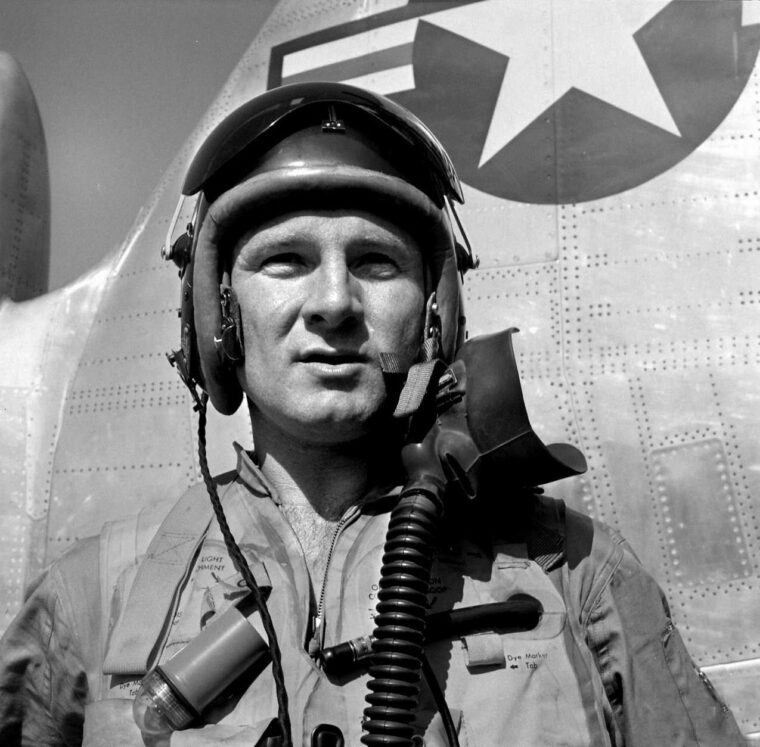
By the late 1950s, only the centerpiece of the SSF, the Martin P6M SeaMaster, remained under development. It too was experiencing severe problems with test-flight accidents, cost overruns, and seemingly interminable delays. The key to the SSF would be its own nuclearbomb-carrying strike aircraft, a jet-powered, fast, technologically advanced seaplane. Accordingly, it issued specifications for such an aircraft in April 1951. Design requirements for the new flying boat were stringent. To achieve them, a seaplane would require a performance equal to that of a land-based jet. The aircraft would need a bomb capacity of 14 tons, be able to attack targets 1,500 miles from its mobile base, and achieve speeds of 650 miles per hour during low-level attacks. The Navy selected Martin to build two prototype aircraft to these rigid specifications in October 1952, to be identified as XP6M-1s.
The two XP6M-1 prototypes were fitted with four Allison J71-A-4 turbojet engines mounted in pairs within four nacelles above the wing near its roots. Known as SeaMasters, the two aircraft had anhedral drooped wings, featuring 40 degrees of sweepback that ended in wingtip fuel tanks that also served as floats. The wingtip floats contained equipment that helped dock the aircraft. The SeaMaster had a pressurized cabin and a crew of four: pilot, copilot, navigator, and flight engineer. Its sole defensive armament was a pair of 20mm cannons mounted in a remote-controlled tail turret.
Testing the SeaMaster
During flight testing in 1955, the initial prototype SeaMaster quickly revealed one obvious weakness. Its jet engines had been oriented parallel to the hull so that exhaust gases exited over the rear fuselage, thus scorching it in that area and limiting use of afterburners. Corrective action was taken on later P6M-1 and P6M-2 models, which mounted their four turbine nacelles in a toed-in manner so that jet exhausts were directed outboard of the rear fuselage. Other problems encountered by the first experimental XP6M-1 were unexplained vibrations throughout the hull, plus rear turret and rotary bomb rack malfunctions.
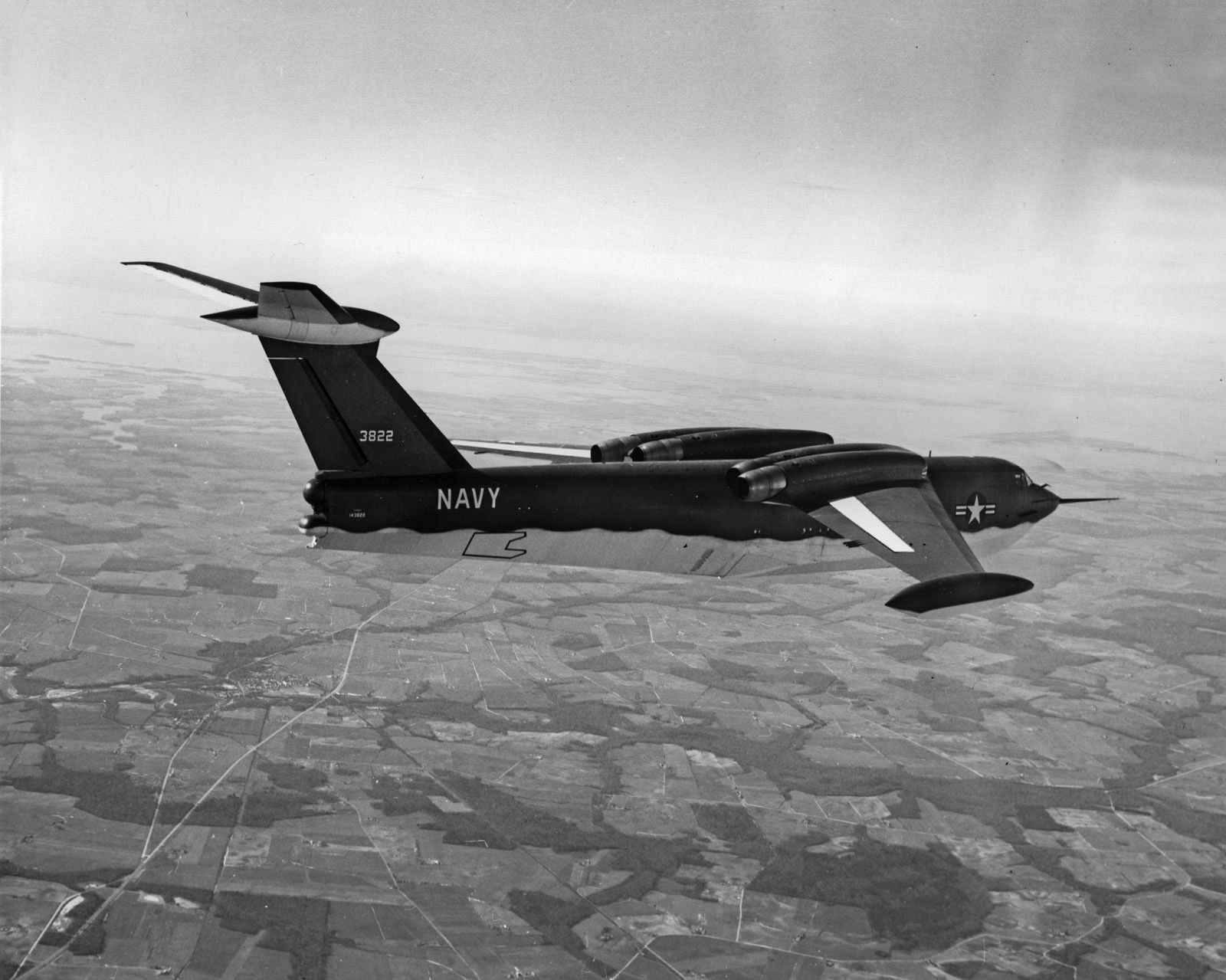
By late 1955, most problems with the XP6M-1 were determined to be curable, and the Navy assigned an evaluation team from its nearby Naval Air Test Center in Maryland to work with Martin during further development. In December 1955, a mixed crew of Martin and Navy personnel took one XP6M-1 up for a routine test flight. While descending at full power from 8,700 feet, the test aircraft suddenly exploded and disintegrated in the air, killing all four occupants.
The Navy immediately instituted an exhaustive accident investigation into the loss of the XP6M-1, concluding that the plane had experienced longitudinal divergence that tore the engines loose and caused the wings to fold entirely under the airplane before they broke away. The investigation could not ascertain the cause of the divergence but suggested that it might have been the result of a failure in the activator for the horizontal stabilizer. The Navy’s continued confidence in the SeaMaster program drove further development of the aircraft, and there was no cancellation of the contracted six YP6M-1 service evaluation planes. With surprisingly little delay, the remaining XP6M-1 resumed testing in May 1956. It was modified to include new flight instrumentation, plus ejection seats for all four crew members. During a flight test in November 1956, the aircraft again broke up in the air, although this time all crew members ejected safely. An investigation traced the cause to an error in the design calculation for the tail control system.
Throughout 1958, the YP6M-1s tested their mine-laying, bombing, navigation, and reconnaissance systems. The Navy proceeded with 24 production versions of the P6M-2s, the first of which was delivered by Martin early in 1959. These aircraft were powered by more powerful non-afterburning Pratt & Whitney J75-P-2 turbojet engines that permitted a substantial increase in gross weight for the aircraft. Since this meant the SeaMasters sat lower in the water, their wing anhedral was eliminated. The P6M-2s were also fitted with improved navigation and bombing systems, plus midair refueling probes. In this production version, the SeaMaster was an impressive weapon. It achieved the specified 650 miles per hour for on-the-deck attacks. But the aircraft also evidenced some unpleasant flight characteristics, such as rapid changes in directional trim, severe buffeting, and wing drop requiring high control inputs to counter. These defects were traced to larger engine nacelles required by the J75 engines. Other problems also became evident as testing continued, such as tip floats digging into the water during choppy seas and engine surges.
In August 1959, the Navy canceled further operational development of the SeaMaster program. By then, the modern equivalent of $2.5 billion had been spent on the SeaMasters, which had ballooned in cost and suffered numerous, still unsolved technological problems. The Martin P6M SeaMaster development joined the Convair Pogo, Sea Dart, and Tradewind programs as failed elements of the SSF.
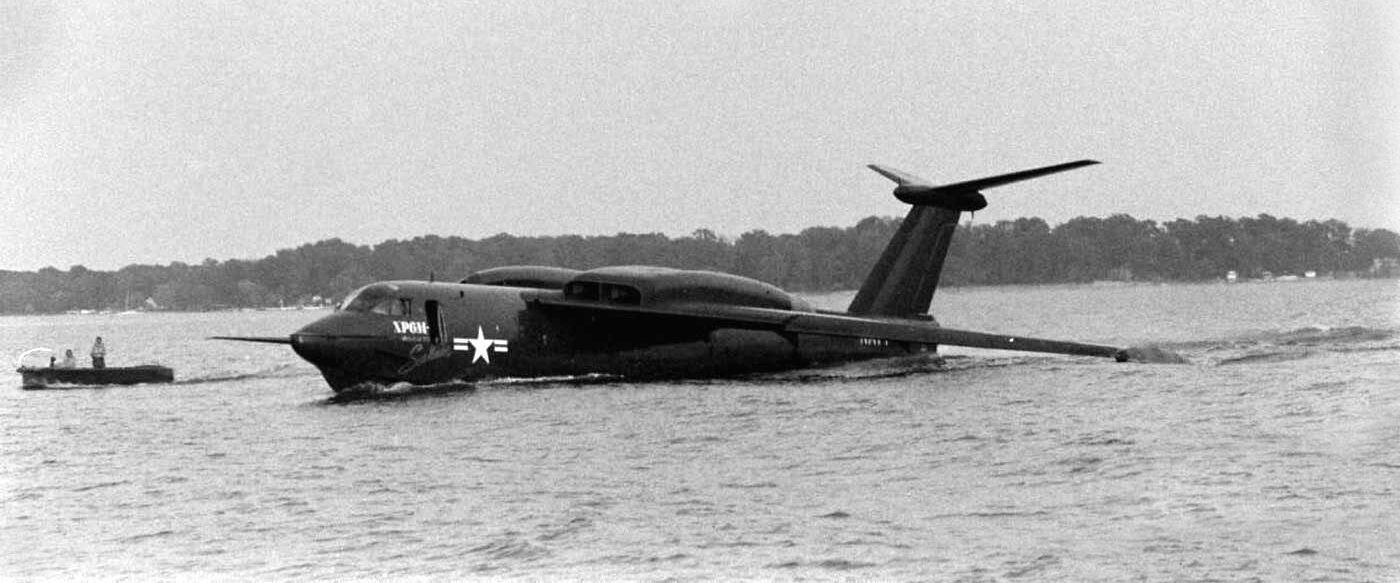
The Carrier Wins Over the Seaplane Striking Force
In retrospect, while the SSF concept had its ardent and articulate advocates, it was probably never going to perform a primary role in the Navy’s nuclear strike mission. Jet aircraft and carrier advancements obviated the four aircraft conceived to implement the program, but it was also overtaken by extraneous worldwide events. Seaplane advocates in the Navy were far outweighed by senior carrier aviators, whose influence became dominant during the 1950s. Perhaps most important, the rapid development of ballistic missiles dramatically reduced the need for manned aircraft as delivery vehicles for nuclear weapons. The Seaplane Striking Force was a costly concept whose time never arrived.
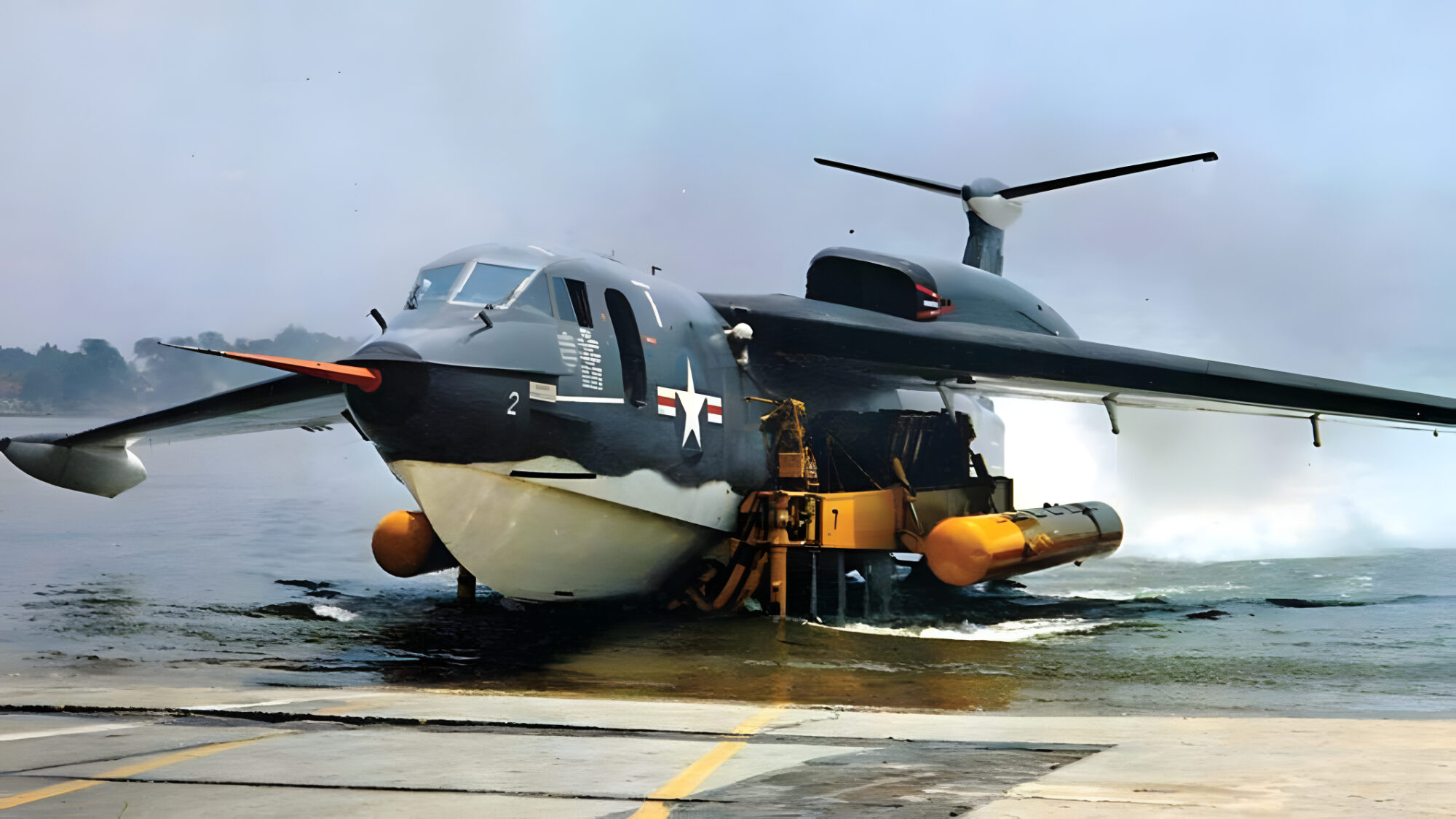
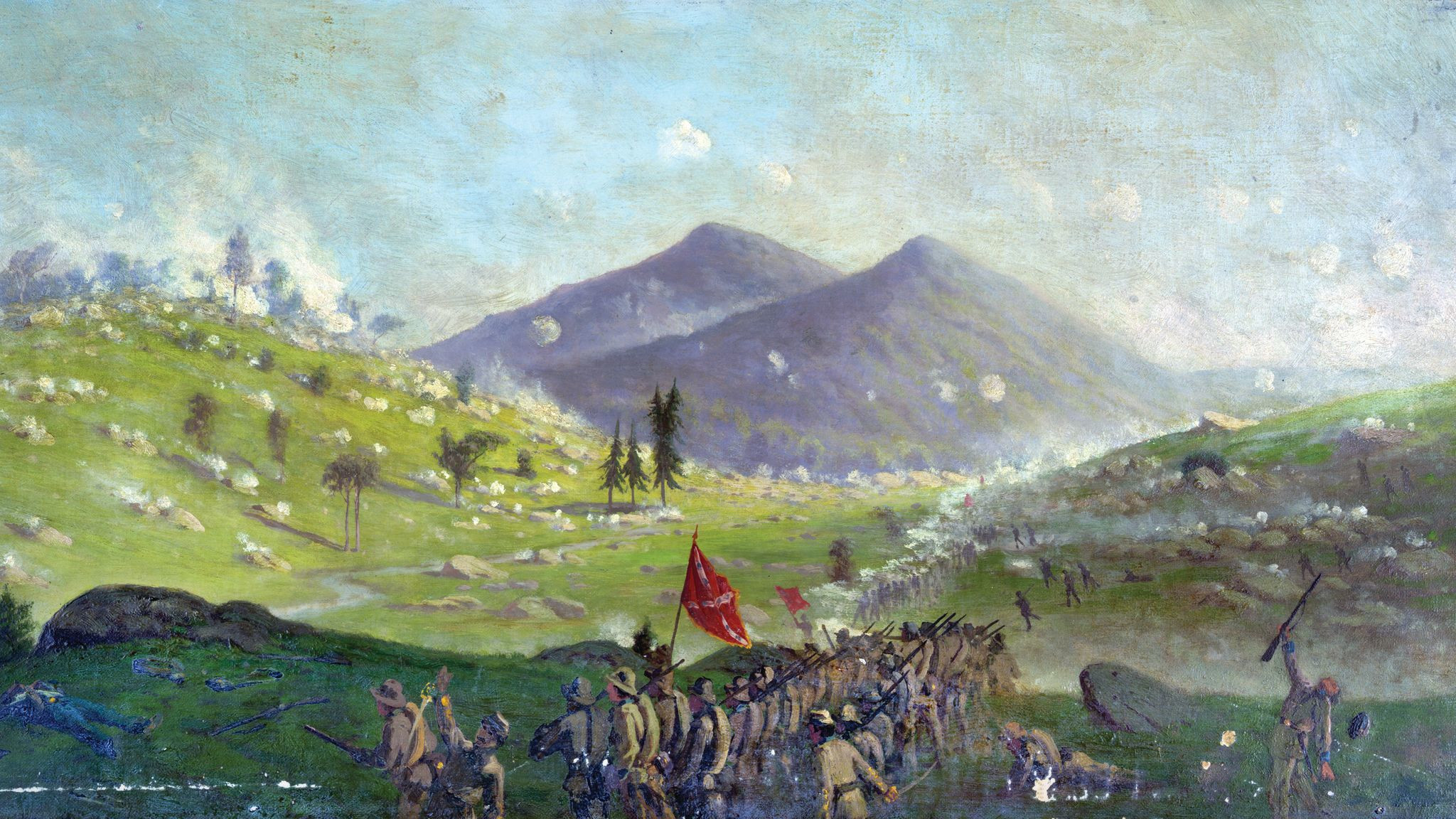

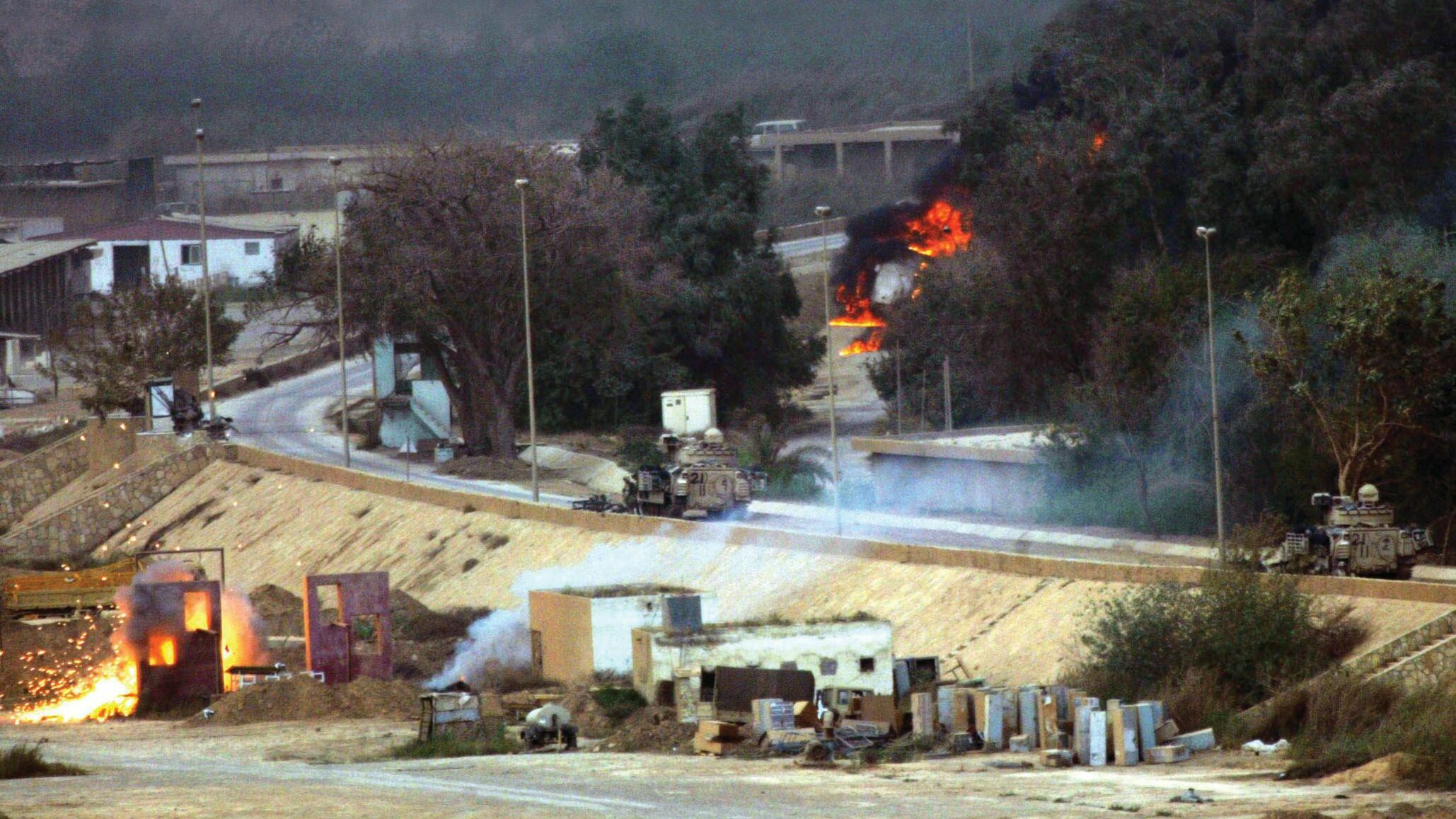

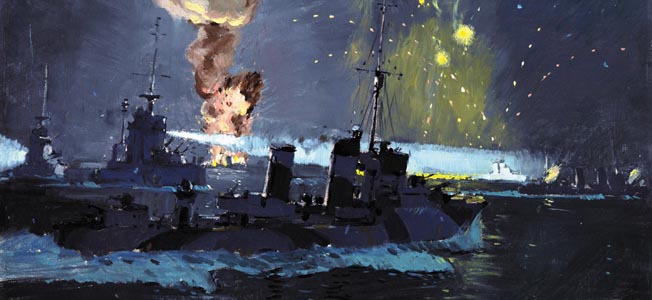
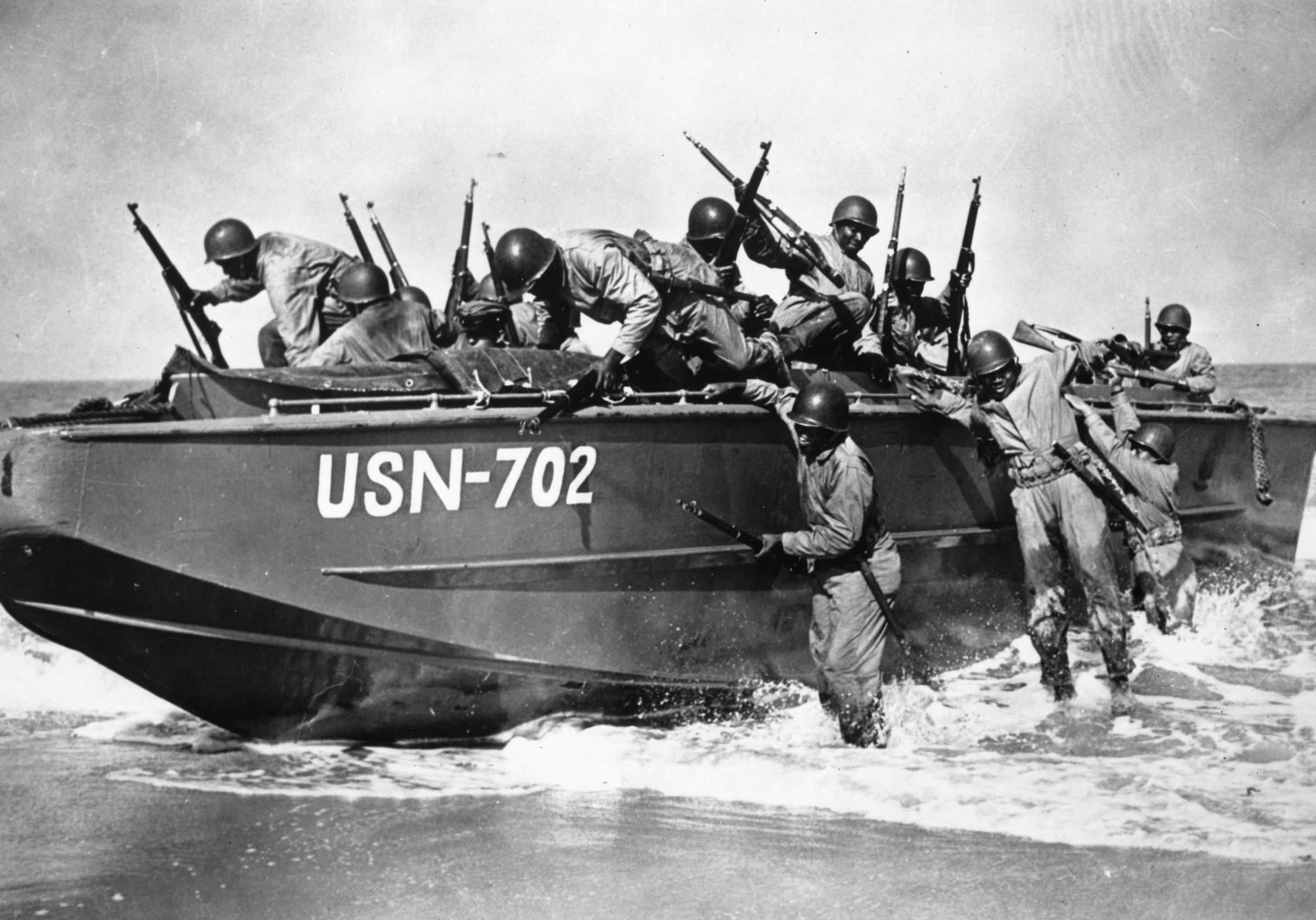
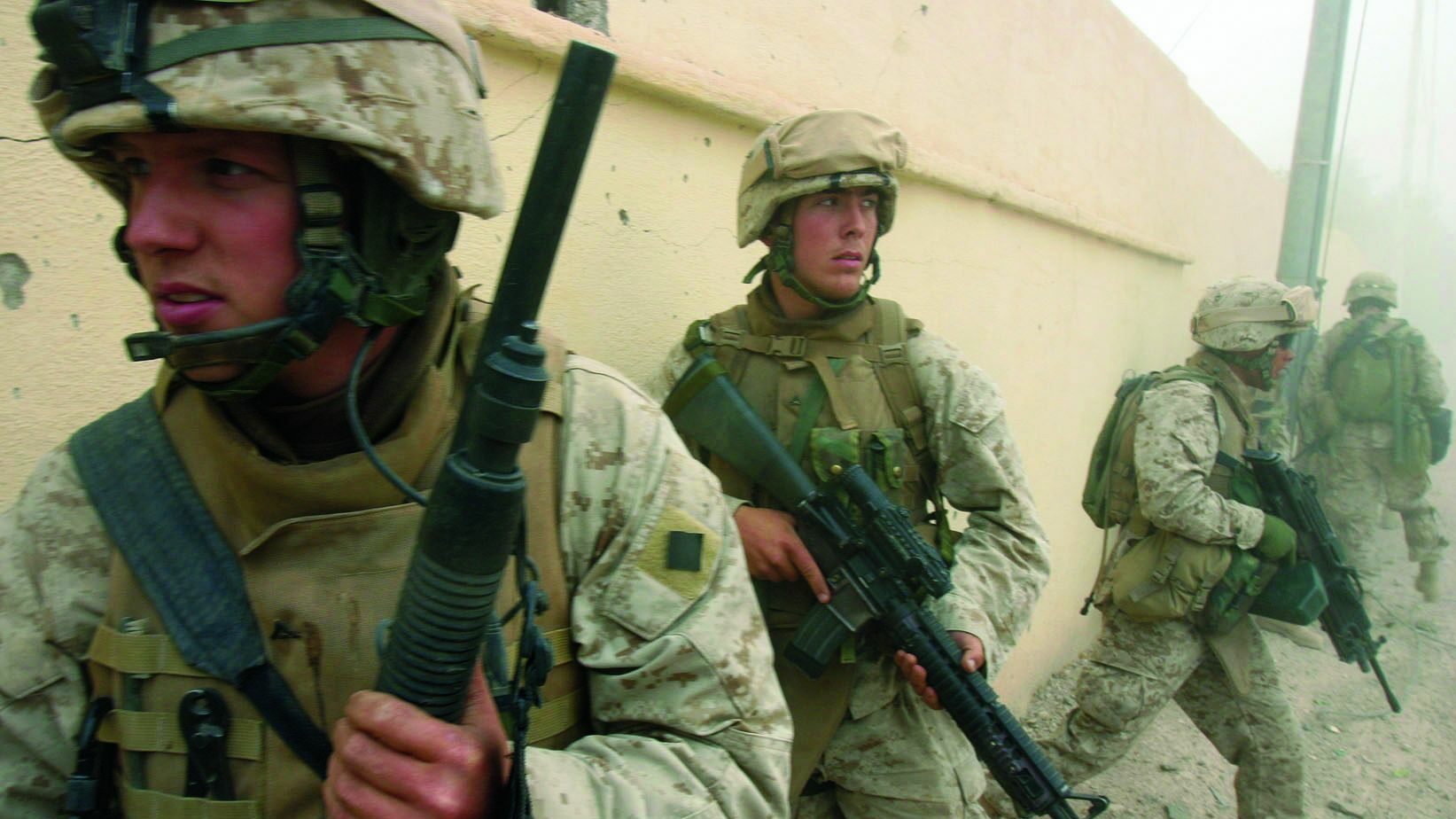
Join The Conversation
Comments
View All Comments